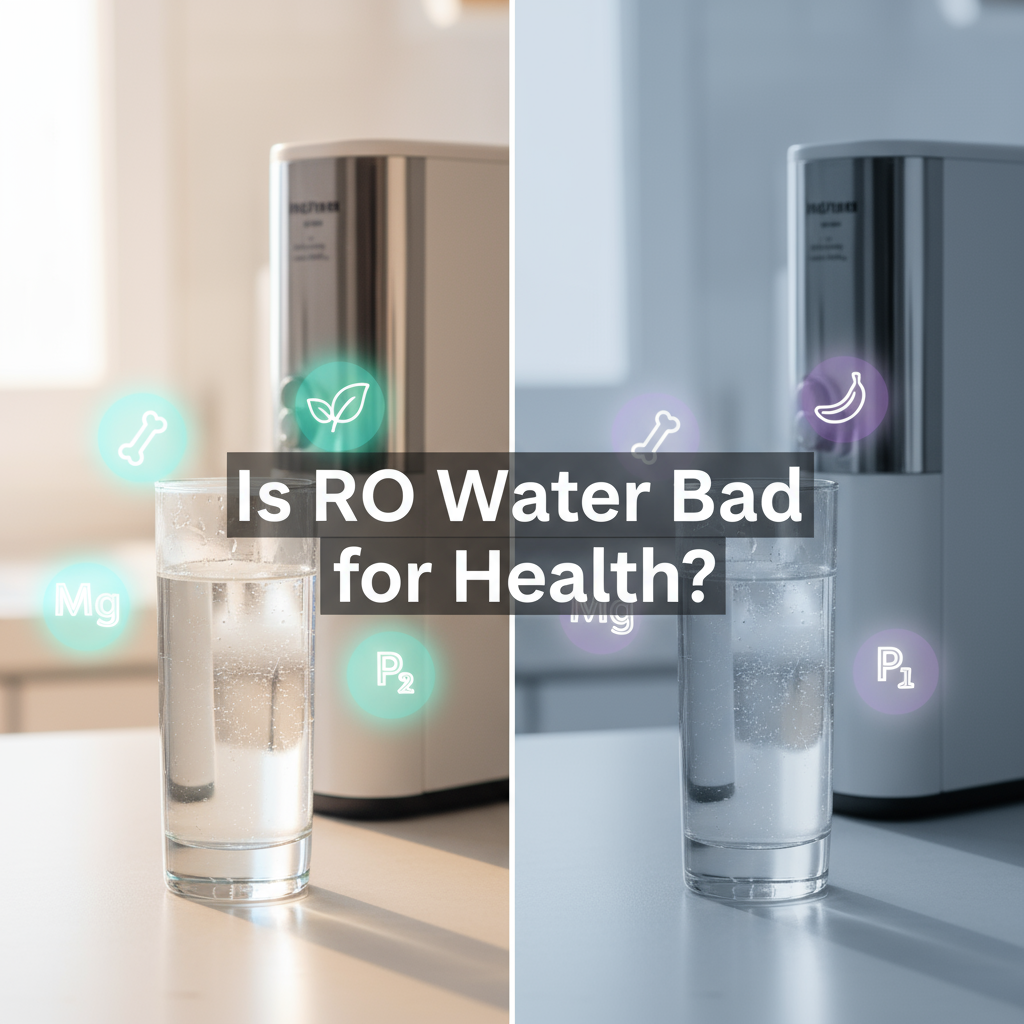RO (Reverse Osmosis) water purifiers are widely used to provide clean drinking water, but there’s growing debate about whether they may have unintended health risks over time like “Is RO water purifier bad for health?”
What’s Really in Your Glass of Water?
Modern kitchens often feature an RO water purifier, hailed for delivering ultra-pure drinking water. But did you ever stop to ask: Could this water be too clean for your own good? With warnings from health experts and international organizations, what’s hiding behind that crystal-clear glass—protection or a hidden health threat?
The Promise and Problem of RO Purifiers
RO technology uses a multi-stage filtration process to eliminate toxins such as lead, mercury, arsenic, and chlorine, offering reliable protection from waterborne diseases. But there’s a catch: the very same process strips water of essential minerals like calcium, magnesium, and potassium, minerals necessary for bodily functions.
Experts have repeatedly raised concerns. For instance, the World Health Organization (WHO) flagged that long-term consumption of low-mineral RO water can cause deficiencies and related symptoms like fatigue, muscle cramps, poor immunity, and even cardiovascular issues. Studies from India and abroad found that those relying exclusively on RO-purified water may experience these health setbacks within a matter of months.
Another aspect often overlooked is taste and acidity—demineralized water tends to have a flat taste and a slightly acidic pH, which doesn’t sit well with everyone. In fact, water with low mineral content can disturb electrolyte balance, potentially impacting vital organs over time.
To make matters more complicated, RO systems are not without engineering and environmental drawbacks—high initial and maintenance costs, slow filtration, and significant water wastage. For every liter of purified water, up to 4 liters may be discarded, raising sustainability concerns.
Are There Safer Alternatives?
The answer isn’t as simple as rejecting RO systems outright. These devices are unmatched in removing certain toxins, especially in areas with high water contamination. But health professionals suggest a balanced approach:
- Use remineralization filters to restore some essential minerals after purification.
- Consider boiling water after basic filtration to address microbiological threats without severe mineral loss.
- If possible, rely on water sources with moderate levels of natural minerals for daily consumption instead of relying exclusively on RO water.
Conclusion: Should You Worry About RO Water?
RO purifiers are not inherently dangerous, but the potential health impact of mineral loss deserves serious attention. If local water is heavily contaminated, RO remains a necessity. However, regular users should explore remineralization or complementary filtration methods to avoid long-term mineral deficiencies. Don’t let that glass fool you—sometimes, a little imperfection is just what your body needs.
